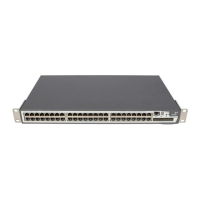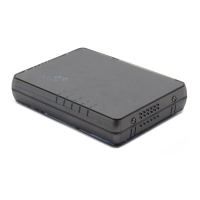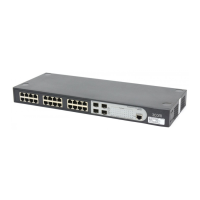372 CHAPTER 11: USING AAA AND RADIUS COMMANDS
Example
In the ISP domain "marlboro.net", configure the URL address of the page used to
change the user password on the self-service server to
http://10.153.89.94/selfservice/modPasswd1x.jsp
|userName.
<SW5500>system-view
System View: return to User View with Ctrl+Z.
[SW5500]domain marlboro.net
[SW5500-isp-marlboro.net] self-service-url enable
http://10.153.89.94/selfservice/modPasswd1x.jsp|userName
service-type Syntax
service-type { ftp [ ftp-directory
directory
] | lan-access | ssh |
terminal | telnet [ level
level
] ] | telnet [ level
level
] }
undo service-type { ftp [ ftp-directory ] | lan-access | telnet }
View
Local User View
Parameter
telnet: Specifies user type as Telnet.
level level: Specifies the level of Telnet users. The argument level is an integer
in the range of 0 to 3 and defaults to 0.
ftp: Specifies user type as ftp.
ftp-directory directory: Specifies the directory of ftp users, directory is a
character string of up to 64 characters.
lan-access: Specifies user type to lan-access, which mainly refers to Ethernet
accessing users, 802.1x supplicants for example.
ssh: The specified user type is ssh.
terminal: The specified user type is terminal which refers to users who use the
terminal service (login from the console port).
Description
Use the service-type command to configure a service type for a particular user.
Use the
undo service-type command to cancel the specified service type for the
user.
When you configure the service type ssh, Telnet or Terminal, note the following:
■ When you configure a new service type for a user, the system adds the new
service type to the existing one.
■ You can set a user level when you configure a service type. If you set multiple
service types and specify the user levels, only the last configured user level is
valid. Service types do not have individual user levels.

